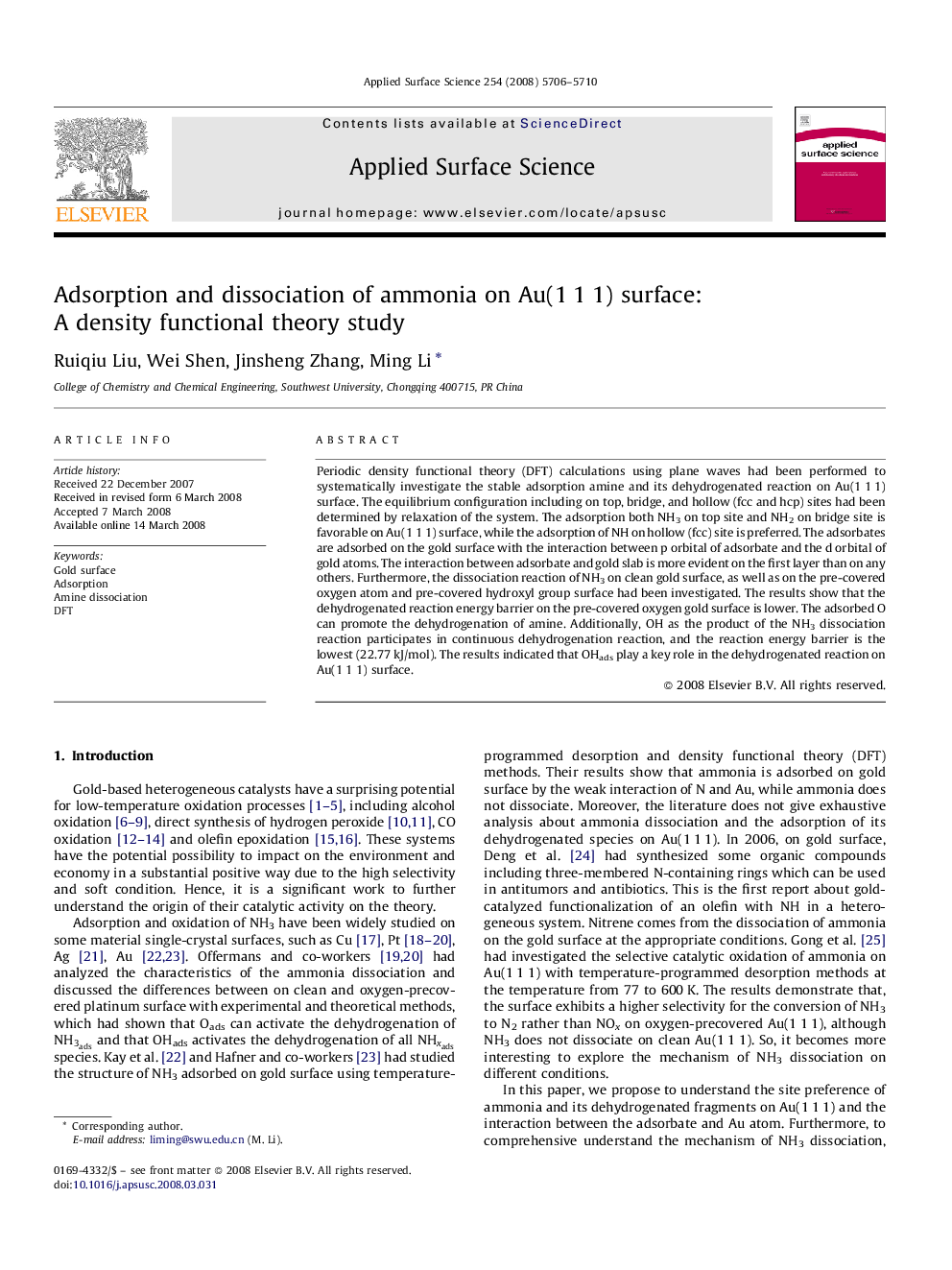| Article ID | Journal | Published Year | Pages | File Type |
|---|---|---|---|---|
| 5362362 | Applied Surface Science | 2008 | 5 Pages |
Periodic density functional theory (DFT) calculations using plane waves had been performed to systematically investigate the stable adsorption amine and its dehydrogenated reaction on Au(1Â 1Â 1) surface. The equilibrium configuration including on top, bridge, and hollow (fcc and hcp) sites had been determined by relaxation of the system. The adsorption both NH3 on top site and NH2 on bridge site is favorable on Au(1Â 1Â 1) surface, while the adsorption of NH on hollow (fcc) site is preferred. The adsorbates are adsorbed on the gold surface with the interaction between p orbital of adsorbate and the d orbital of gold atoms. The interaction between adsorbate and gold slab is more evident on the first layer than on any others. Furthermore, the dissociation reaction of NH3 on clean gold surface, as well as on the pre-covered oxygen atom and pre-covered hydroxyl group surface had been investigated. The results show that the dehydrogenated reaction energy barrier on the pre-covered oxygen gold surface is lower. The adsorbed O can promote the dehydrogenation of amine. Additionally, OH as the product of the NH3 dissociation reaction participates in continuous dehydrogenation reaction, and the reaction energy barrier is the lowest (22.77Â kJ/mol). The results indicated that OHads play a key role in the dehydrogenated reaction on Au(1Â 1Â 1) surface.
